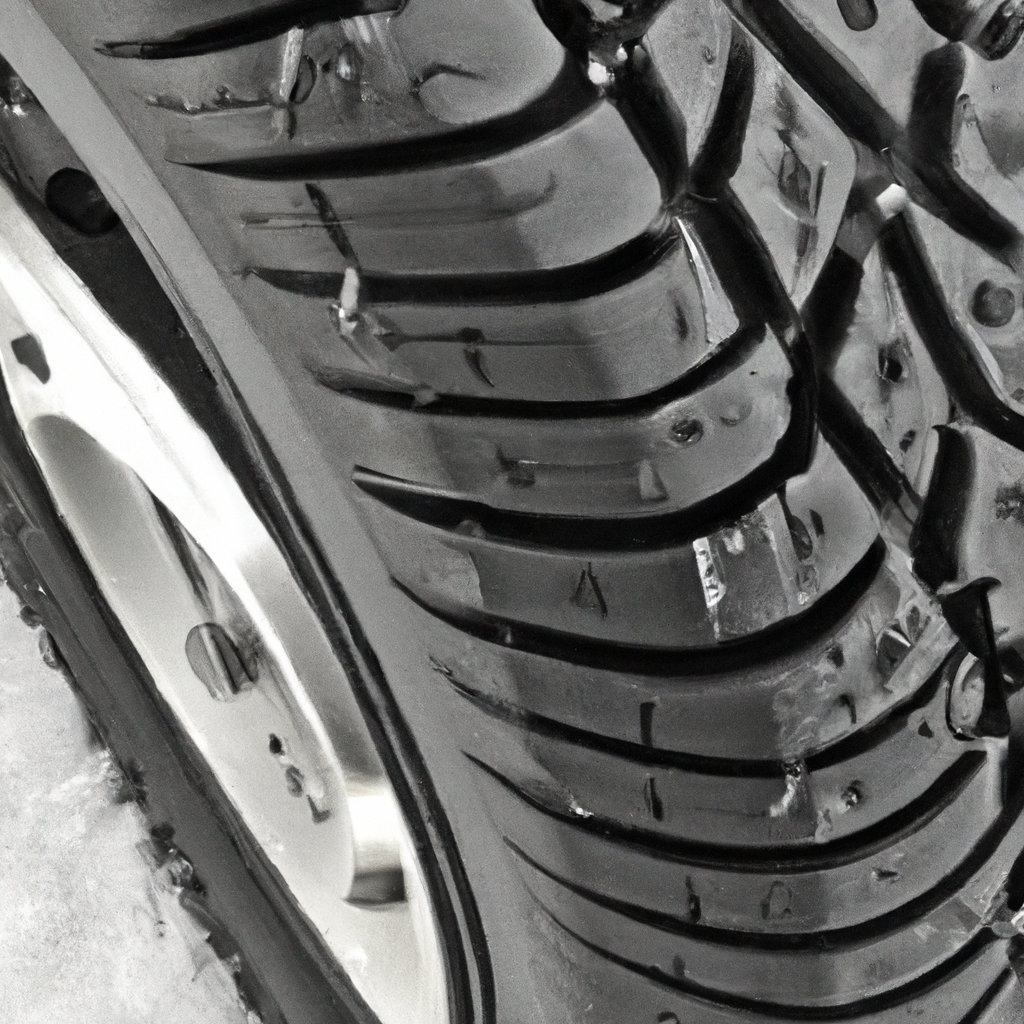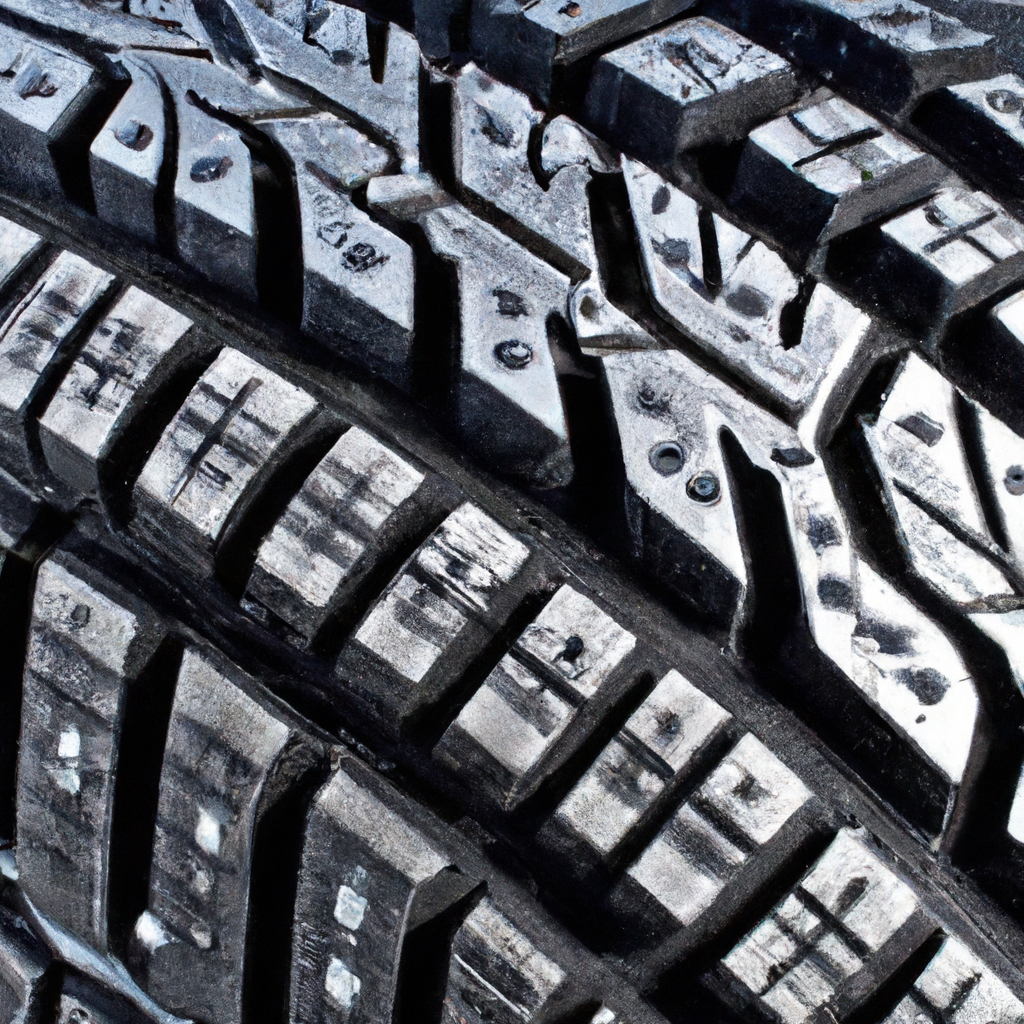If you’re in search of better traction during those chilly winter months, studded winter tires might just be the answer you’re looking for. These specialized tires are designed with metal studs embedded in their tread, providing superior grip on icy and snowy roads. But before you rush to make a purchase, it’s important to understand the regulations and considerations surrounding the use of studded tires. In this article, we’ll explore the benefits and restrictions of studded winter tires, helping you make an informed decision to stay safe on the road this winter season.
What are studded winter tires?
Definition of studded winter tires
Studded winter tires are a specialized type of tire designed for use in icy or snowy conditions. These tires are equipped with small metal studs protruding from the tread surface, which can provide additional grip on slippery surfaces. The studs are typically made of durable materials such as tungsten carbide or hardened steel.
How do studded winter tires work?
Studded winter tires work by utilizing the metal studs to dig into packed snow or ice, creating extra traction. The studs act as tiny gripping points that help the tire maintain a better grip on slippery surfaces, reducing the risk of skidding or losing control. As the tire rotates, the studs bite into the ice, providing additional stability and control.
Advantages of studded winter tires
One of the main advantages of studded winter tires is their ability to provide enhanced traction on icy or packed snow surfaces. This additional traction can significantly improve the ability to accelerate, brake, and corner safely in winter conditions. Studded tires can help drivers navigate tricky winter roads with increased confidence and reduce the risk of accidents caused by slippery conditions.
Are studded winter tires legal?
Legal restrictions on studded winter tires
The use of studded winter tires is regulated by law in many regions due to potential damage to road surfaces. Some areas prohibit the use of studded tires altogether, while others have specific rules regarding their use during certain times of the year. It is essential to be aware of the specific regulations in your area before considering the use of studded winter tires.
Regulations by state or country
The regulations governing studded winter tires can vary from state to state and country to country. For example, in the United States, some states may only allow the use of studded tires during certain months or restrict them to certain types of vehicles. Other states may completely ban the use of studded tires. It is crucial to check with your local transportation department or consult the relevant laws to ensure compliance with regulations.
Alternatives to studded winter tires
If studded winter tires are not permitted or suitable for your specific situation, several alternatives can still enhance winter traction. Winter tires with advanced rubber compounds can provide excellent grip on snowy and icy surfaces. Additionally, tire chains or cables can be used to improve traction on slippery roads. Another option is tire socks, which are fabric covers that wrap around the tire and offer enhanced grip and traction on snowy or icy surfaces.

Factors to consider before using studded winter tires
Road conditions
Before using studded winter tires, it is important to consider the typical road conditions in your area. Studded tires are most effective on icy or packed snow surfaces, so if your area experiences mostly dry or wet winter conditions, studded tires may not be necessary. Understanding the type of terrain and weather conditions you are likely to encounter will help determine if studded winter tires are the right choice.
Vehicle type and weight
The type and weight of your vehicle can influence the effectiveness of studded winter tires. Lighter vehicles may not benefit as much from studded tires, as they can already have better traction compared to heavier vehicles. Additionally, studded tires can increase the braking distance for certain vehicles, so it is important to consider the specific characteristics of your vehicle before opting for studded winter tires.
Local regulations
As mentioned earlier, it is essential to be aware of the local regulations and restrictions regarding studded winter tires. Some areas have strict rules on their use, and violating these regulations can result in fines or penalties. Understanding and complying with the regulations in your area will ensure a safe and legal use of studded winter tires.
Noise and road damage
Studded winter tires can produce more noise compared to non-studded tires. The metal studs hitting the road surface can create a distinct sound, which may be bothersome to some drivers. Additionally, studded tires have the potential to cause damage to certain road surfaces, such as asphalt. If noise levels or road damage are concerns, alternative traction devices or non-studded winter tires may be more suitable options.
Benefits of studded winter tires
Enhanced traction on icy or packed snow surfaces
One of the significant advantages of studded winter tires is their ability to provide enhanced traction on icy or packed snow surfaces. The metal studs allow the tires to grip onto the surface, reducing the risk of slipping or skidding. This improved traction can make a significant difference in your ability to accelerate, brake, and maneuver safely in winter conditions.
Improved braking performance
Studded winter tires can significantly improve braking performance on icy or snow-covered roads. The metal studs help the tires bite into the surface, allowing for shorter braking distances and reducing the risk of accidents caused by inadequate braking. With studded winter tires, you can have increased control over your vehicle’s stopping power in hazardous winter conditions.
Increased stability and control
Studded winter tires can help enhance the stability and control of your vehicle on slippery surfaces. By digging into the ice or packed snow, the metal studs provide extra grip, allowing for better cornering and handling. This increased stability can make driving in winter conditions feel more secure and help prevent accidents caused by loss of control.

Drawbacks of studded winter tires
Increased road noise
One of the drawbacks of studded winter tires is the increased road noise they generate. The metal studs hitting the road surface can create a distinct and sometimes bothersome noise. This can be particularly noticeable on dry pavement or when driving at higher speeds. If you are sensitive to noise or prefer a quieter driving experience, studded winter tires may not be the best choice.
Reduced fuel efficiency
Studded winter tires can cause a reduction in fuel efficiency. The added weight and increased rolling resistance of the metal studs can lead to higher fuel consumption. While the exact impact on fuel efficiency can vary depending on driving conditions and other factors, it is essential to consider this aspect before opting for studded winter tires, especially if you have long commutes or frequently drive in urban areas.
Potential damage to road surfaces
The metal studs on studded winter tires have the potential to cause damage to certain road surfaces, particularly asphalt. The constant impact of the studs hitting the road can lead to small divots or depressions. This can be a concern for municipalities and road maintenance departments, as the repair of these road damages can be costly. It is important to consider the potential impact of studded tires on road surfaces, especially in areas with stricter regulations.
Limited effectiveness on certain road conditions
While studded winter tires excel in providing traction on icy or packed snow surfaces, their effectiveness may be limited in other conditions. On dry or wet roads, studded tires may not offer significant benefits compared to non-studded winter tires or tires with advanced rubber compounds. It is important to consider the variety of road conditions you are likely to encounter and evaluate whether studded tires are the most suitable choice.
How to install studded winter tires
Professional installation vs. DIY
Installing studded winter tires can be a challenging task, and it is recommended to seek professional installation. Tire shops or service centers experienced in installing studded tires can ensure proper placement and alignment of the studs, maximizing their effectiveness and minimizing the risks of damage or uneven wear. Professional installation will help ensure your studded winter tires perform optimally and last longer.
Proper stud placement
Correct stud placement is crucial for optimal performance of studded winter tires. The studs should be evenly spaced across the tread surface, and their placement should conform to the specific recommendations provided by the tire manufacturer. Following the manufacturer’s guidelines and recommendations for stud placement will help ensure that the studs engage with the road surface effectively and provide the intended traction benefits.
Maintenance and inspection
Regular maintenance and inspection of studded winter tires are essential for their continued performance and longevity. It is recommended to check the condition of the studs periodically, ensuring they are tightly secured and not worn down excessively. Additionally, maintaining the proper tire pressure and rotating the tires regularly can help maximize their lifespan and performance.

Tips for using studded winter tires
Use caution on dry or wet roads
While studded winter tires can provide enhanced traction on icy or snowy surfaces, they may not offer significant benefits on dry or wet roads. In fact, the metal studs can reduce traction and handling on these surfaces. It is important to exercise caution and adjust driving habits accordingly when driving on dry or wet roads with studded winter tires.
Avoid aggressive driving
Studded winter tires help enhance traction and control, but it is important to remember that they are not a guarantee against accidents. It is crucial to avoid aggressive driving behaviors such as excessive speeding, sudden acceleration, or abrupt braking, even with studded tires. Practicing safe and defensive driving techniques is essential for maintaining control and reducing the risk of accidents, regardless of the type of tires you have.
Check local regulations
Before using studded winter tires, always check the local regulations and restrictions in your area. Familiarize yourself with the allowed usage periods, specific rules, and any associated fines or penalties for non-compliance. Adhering to the local regulations will ensure a legal and safe usage of studded winter tires.
Replace worn studs
Over time, the metal studs on studded winter tires can wear down, reducing their effectiveness. It is important to periodically check the condition of the studs and replace them when necessary. Worn or damaged studs should be promptly replaced to ensure optimal traction and performance. Regular inspection and maintenance will help ensure that your studded winter tires retain their traction-enhancing capabilities.
Alternatives to studded winter tires
Winter tires with advanced rubber compounds
Winter tires with advanced rubber compounds can offer excellent traction on snowy and icy surfaces without the need for studs. These tires are specifically designed to excel in cold temperatures and provide enhanced grip on winter roads. They often incorporate specialized tread patterns and rubber compounds optimized for winter conditions, making them a popular alternative to studded winter tires.
Tire chains or cables
Tire chains or cables are another alternative to studded winter tires for improving traction on slippery roads. These devices are wrapped around the tire tread to enhance grip and traction. They are typically used in areas with heavy snowfall or steep inclines. Tire chains or cables can be quickly installed and removed, providing temporary increased traction when needed.
Tire socks
Tire socks are fabric covers that slip over the tires, providing enhanced grip on snowy or icy surfaces. They are easy to install and remove, making them a convenient option for temporary traction improvement. Tire socks are particularly suitable for areas with infrequent snowfall or for drivers who may encounter occasional winter conditions.

Cost considerations of studded winter tires
Initial purchase cost
Studded winter tires tend to be more expensive than standard winter tires due to the additional components and manufacturing processes involved. The cost can vary depending on the tire brand, size, and other factors. It is important to factor in the initial purchase cost when considering studded winter tires as a winter traction solution.
Installation and removal expenses
Professional installation of studded tires can incur additional costs beyond the tire purchase. It is advisable to account for these installation expenses when budgeting for studded winter tires. Additionally, some regions may require tire removal by a certain date, which can lead to additional expenses if you opt for professional removal services. DIY removal may save costs, but it is essential to follow proper removal procedures to avoid damaging the tires or the vehicle.
Long-term cost-effectiveness
While studded winter tires may involve higher upfront costs, their long-term cost-effectiveness depends on the specific winter conditions and your driving habits. If you frequently encounter icy or packed snow surfaces and your local regulations permit their use, studded tires can provide invaluable traction and safety benefits. It is important to weigh the initial investment against the potential benefits and make an informed decision based on your individual needs and budget.
Conclusion
Studded winter tires can be an effective solution for enhancing traction on icy or packed snow surfaces. They provide increased stability, braking performance, and control in winter conditions. However, it is crucial to consider various factors such as local regulations, road conditions, and the specific characteristics of your vehicle before opting for studded tires. Alternatives like winter tires with advanced rubber compounds, tire chains or cables, and tire socks can also offer traction improvement. Additionally, factors such as increased road noise, reduced fuel efficiency, potential road damage, and limited effectiveness in certain conditions should be considered. By carefully evaluating these factors and making an informed decision, you can choose the most suitable winter traction solution for your needs, ensuring a safe and comfortable winter driving experience.


